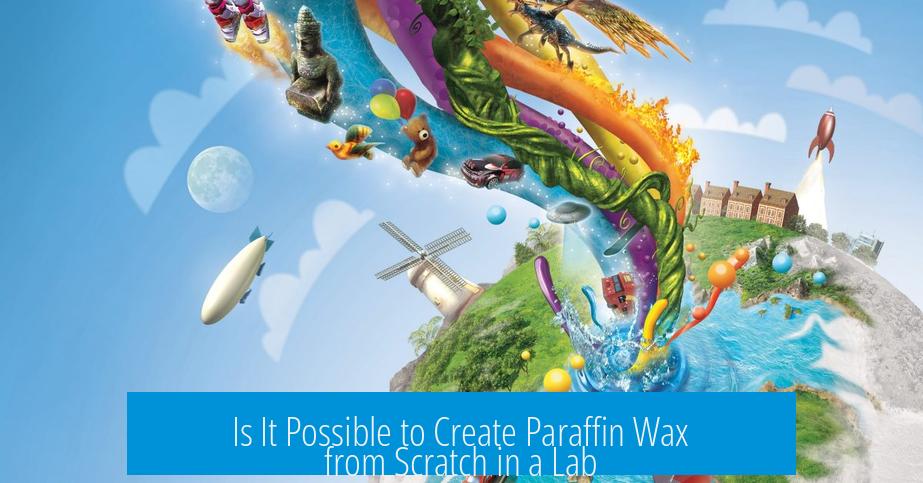Is It Possible to Create Paraffin Wax from Scratch in a Lab?

Yes, it is possible to create paraffin wax from scratch in a laboratory setting, but the process is complex and not practical at a small scale. Paraffin wax consists mainly of long-chain saturated hydrocarbons. Synthesizing it requires sophisticated chemical routes and is generally performed at an industrial scale.
Fischer-Tropsch Process: The Primary Method
The Fischer-Tropsch (F-T) process converts carbon monoxide (CO) and hydrogen gas (H2) into hydrocarbons, including waxes.
- This method starts from syngas, which can be obtained from carbon and hydrogen feedstocks such as coal, natural gas, or biomass.
- In lab settings, it is technically feasible but rather difficult due to the need for high pressure, specialized catalysts, and precise reaction control.
- Industrially, the F-T reaction is scaled up and applied for wax production, especially in gas-to-liquids (GTL) plants like Shell’s process using natural gas.
Laboratory-scale production of paraffin via Fischer-Tropsch exists mostly as a demonstration or research effort rather than a commercial approach.
Alternative Synthetic Routes
Another route starts with ethanol dehydration to form ethylene, followed by polymerization through the Shell Higher Olefin Process (SHOP) to generate long-chain olefins (C20-C40).
- Subsequent hydrogenation of the vinyl group saturates the molecule, yielding paraffin wax.
- This pathway can use bioethanol, thereby avoiding fossil fuels and making it more sustainable.
However, this route remains complex and typically requires industrial-scale facilities due to the involved catalytic steps.
Economic and Practical Considerations
Producing paraffin wax synthetically in the lab is costly and inefficient.
- Industrial processes for paraffin use abundant fossil feedstock or biogas when aiming for greener alternatives.
- Economic feasibility depends on raw material prices; natural gas prices make GTL processes viable only in select regions.
- Due to these costs, market preference often shifts toward bio-based waxes like soy or rapeseed wax for environmental and economic benefits.
Summary of Key Points
- Paraffin wax synthesis in a lab is technically possible but impractical and challenging.
- The Fischer-Tropsch process is the main industrial method, needing syngas and specific catalysts.
- Alternative bio-based routes exist involving ethanol dehydration and SHOP polymerization.
- Economics favor large-scale production using natural gas or biogas; lab scale production is uneconomical.
- Bio-based waxes often serve as greener, cost-effective alternatives to synthetic paraffin.
Can paraffin wax be made from scratch in a lab?
Yes, but it is difficult. The process is complex and not very lab-friendly. It often requires industrial scale equipment to be practical.
What is the Fischer-Tropsch process’s role in making paraffin wax?
This process converts carbon monoxide and hydrogen into waxes. It is technically possible on a small scale but mainly used industrially for commercial production.
Are there fossil fuel-free methods to synthesize paraffin wax?
Yes. One method starts with ethanol, then dehydrates it to ethylene. Using the SHOP process and hydrogenation, paraffin can be made without fossil fuels.
Why isn’t lab-scale paraffin wax production common?
Producing paraffin wax at lab scale is usually uneconomical and complicated. Industrial processes need cheaper feedstocks and large volumes to be viable.
Are there eco-friendly alternatives to paraffin wax?
Yes. Waxes from soy or rapeseed plants serve similar purposes. Reformulating products with these can be a greener, more economical approach.





Leave a Comment